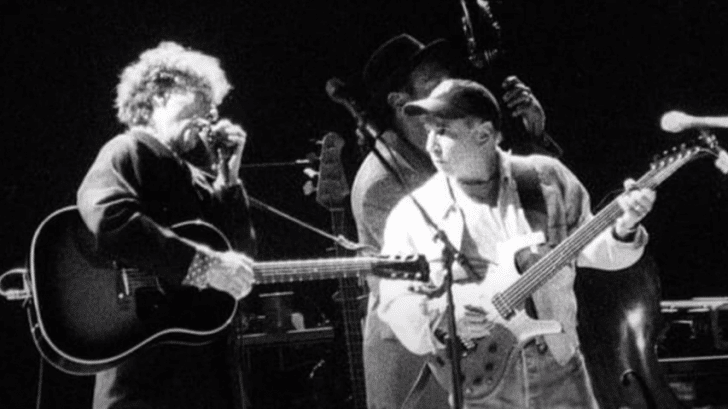Bob Dylan and Paul Simon, two legendary songwriters who crafted some of the most cherished songs of the 1960s and 1970s, have always been admired for their remarkable contributions to music. However, behind their shared musical brilliance, a rivalry simmered between them. While they eventually found common ground and even toured together, the origins of their contentious relationship trace back to an encounter at Gerde’s Folk City in Manhattan’s Greenwich Village.
In March 1964, as Simon & Garfunkel sat on the stage of Gerde’s Folk City, a jarring nasal laugh pierced through their close harmonies. It was none other than Bob Dylan at the bar, engaged in laughter-filled conversation with The New York Times music critic Robert Shelton. For Paul Simon, this was a significant blow. He admired Dylan and his music since first hearing his debut album in 1962. The fact that Dylan was laughing while they performed deeply hurt Simon, igniting the flames of rivalry.
Prior to this incident, Dylan and Simon had a rather uneventful meeting through a mutual acquaintance, but the encounter left much to be desired. They were both awkward and exchanged few words, creating an initial sense of tension. The incident at Gerde’s Folk City only exacerbated their strained relationship, despite later accounts suggesting that Dylan and Shelton’s laughter had nothing to do with Simon & Garfunkel’s performance.
In response to the perceived slight, Simon struck back at his rival through his first solo release in the United Kingdom in 1965, titled “The Paul Simon Songbook.” The album included the song “A Simple Desultory Philippic (Or How I Was Robert McNamara’d Into Submission),” which seemingly parodied Dylan’s music and lyrics. Eventually, the song found its way onto Simon and Garfunkel’s third album, “Parsley, Sage, Rosemary and Thyme.”
Nevertheless, amidst the tension, Simon maintained a level of respect for Dylan, particularly in the early years. He acknowledged the influence Dylan had on his own songwriting, stating that “‘The Sound of Silence’ wouldn’t have been written if it weren’t for Dylan.” However, Simon’s admiration waned as Dylan’s music evolved beyond the folk realm, as Simon explained in a 2011 interview with Rolling Stone.
The rivalry took another turn when Simon poked fun at Dylan’s transition to electric music and his contribution to the folk-rock movement. According to “Homeward Bound: The Life of Paul Simon,” Simon even did a brief Dylan impression during one of his performances. Dylan responded by feigning ignorance of Simon’s existence, claiming he had “never heard” of him in a May 1966 interview with New Musical Express.
Despite their differences, both Dylan and Simon gradually acknowledged begrudging respect for each other’s talents. Dylan praised Simon’s songwriting, highlighting songs like “America,” “The Boxer,” and “Bridge Over Troubled Water” in a 1984 radio interview. He acknowledged that while Simon had also written his fair share of bad songs, it was a shared experience among musicians.
In 1999, Dylan and Simon embarked on a tour together, a significant step in reconciling their differences. While the reviews were mixed, with Rolling Stone describing their joint performance as “half-historic, half-train wreck,” it signaled a shift toward reconciliation between these iconic musicians.
However, despite their efforts to mend the rift, there were still instances that hinted at lingering tensions. Simon reached out to Dylan for a duet on his 2011 solo composition, “So Beautiful or So What.” Although Simon believed Dylan’s weathered voice would be a perfect fit for a specific verse, he never received a response from Dylan, leaving the possibility of unresolved animosity.
The complex rivalry between Bob Dylan and Paul Simon showcases the intricacies that can exist between talented artists. While they both produced timeless music, their clash serves as a reminder that even the most celebrated musicians are not immune to personal and professional differences. Ultimately, their tour together and mutual acknowledgment of each other’s talents serve as a testament to the power of music to bridge divides, even if some remnants of rivalry remain.

